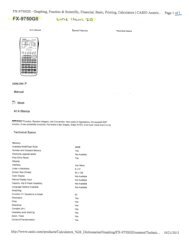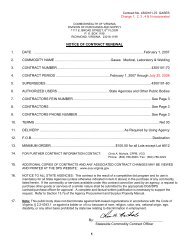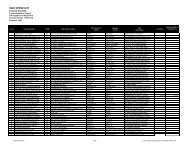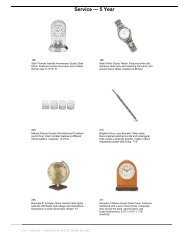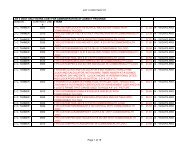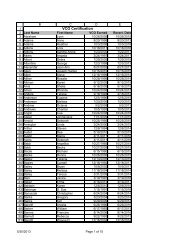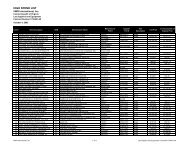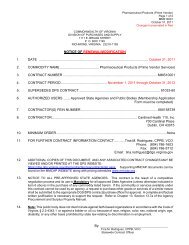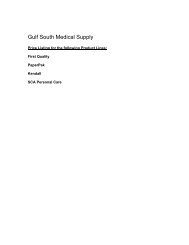attachment 2 section i ? technical specifications commuter coach ...
attachment 2 section i ? technical specifications commuter coach ...
attachment 2 section i ? technical specifications commuter coach ...
You also want an ePaper? Increase the reach of your titles
YUMPU automatically turns print PDFs into web optimized ePapers that Google loves.
Page 53<br />
ATTACHMENT 2<br />
mounted in a location best suited to the application with visible indication of open circuits. The electric<br />
motor shall be heavy-duty either wound field type or permanent magnet, as listed below. Electric<br />
motors shall be located for easy replacement and except for the cranking motor the brushes shall be<br />
replaceable in less than fifteen (15) minutes without removing the motor. Provision shall be made to<br />
ensure that the lubrication line for alternator bearing is secured to prevent lubricant leaks.<br />
Main Evaporator Wound field<br />
Condenser Motors Permanent Magnet<br />
Driver’s Heater and Defroster Permanent Magnet<br />
ProHeat Permanent Magnet<br />
Coolant Recovery Pump Motor Permanent Magnet<br />
Windshield Wiper Motor Permanent Magnet<br />
Windshield Washer Motor Permanent Magnet or air<br />
Dual electric horns shall be provided. Horns shall be positioned to be protected from road hazards and<br />
the elements. The horn trumpets shall be down turned to assure drainage of any moisture that may have<br />
entered.<br />
3.6.5.2 BATTERIES<br />
Batteries shall be easily accessible for inspection and serviceable only from outside the <strong>coach</strong> and shall<br />
be securely mounted on a sliding tray. The battery tray shall accommodate a lead-acid battery system<br />
and shall properly support the batteries during service, filling with automatic equipment, inspection,<br />
and replacement. A positive lock shall retain the battery tray in the normal position. Batteries shall be<br />
of premium construction and shall be fitted with threaded stud terminals. Batteries shall be 4, group 31,<br />
model 1150 maintenance free with 1350 cold cranking amp capacity with 450 CCA reserve minimum.<br />
Positive and negative terminals shall have different size studs, and the battery terminals and cables shall<br />
be arranged to prevent incorrect installation. Battery terminals shall be located for access in less than<br />
thirty (30) seconds with jumper cables. Battery cables shall be flexible and sufficiently long to reach<br />
the batteries in extended positions without stretching or pulling on any connection and shall not lie on<br />
top of the batteries. The battery terminals and cables shall be color-coded with red for the 12V and 24V<br />
positive and black for negative. A slave connection to the batteries shall provide a direct connection to<br />
the batteries for jump starting. A battery jumping connection cable supplied by systems material<br />
handling model SY6320GI shall be supplied in addition to the basic battery boosting posts.<br />
3.6.5.3 MASTER BATTERY SWITCHES<br />
A master battery switch shall be provided near the batteries to provide complete, simultaneous<br />
disconnecting of the batteries from all bus 12 & 24 volt electrical systems. The master switch shall be a<br />
"knife" type switch. Rotary style switches are not acceptable. The master switch shall be located<br />
behind a dedicated access door and shall be accessible in less than ten (10) seconds for operation. The<br />
master switch shall be capable of carrying and interrupting the total circuit load. Opening the master<br />
switch with the powerplants operating shall not damage any component of the electrical system.<br />
3.6.5.4 RADIO NOISE SUPPRESSION<br />
Proper suppression equipment shall be provided in the electrical system to eliminate interference with



